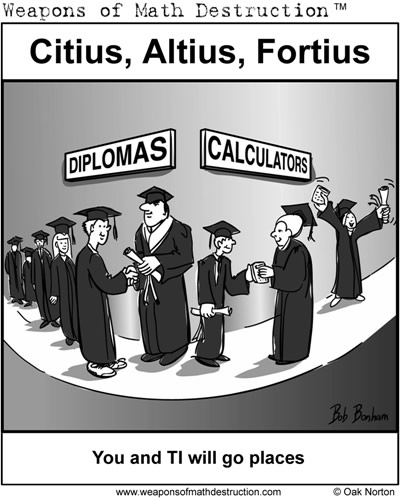|
Updates: 03-11-200903-04-2009 02-16-2009 01-08-2009 12-18-2008 12-13-2008 12-03-2008 11-26-2008 11-15-2008 09-25-2008 09-18-2008 09-03-2008 08-13-2008 07-11-2008 05-28-2008 04-15-2008 03-28-2008 03-22-2008 03-13-2008 03-11-2008 03-06-2008 01-30-2008 01-23-2008 01-16-2008 01-09-2008 12-29-2007 12-12-2007 11-28-2007 11-22-2007 11-16-2007 11-13-2007 11-07-2007 10-31-2007 10-20-2007 10-17-2007 09-26-2007 09-12-2007 08-29-2007 08-23-2007 08-11-2007 07-19-2007 07-11-2007 07-04-2007 06-27-2007 06-20-2007 06-14-2007 06-06-2007 05-30-2007 05-23-2007 05-16-2007 05-09-2007 05-02-2007 04-25-2007 04-18-2007 04-11-2007 04-04-2007 03-28-2007 03-21-2007 03-14-2007 03-08-2007 03-07-2007 03-01-2007 02-28-2007 02-21-2007 02-14-2007 02-07-2007 01-31-2007 01-24-2007 01-17-2007 01-10-2007 01-03-2007 12-20-2006 12-13-2006 12-06-2006 11-22-2006 11-15-2006 11-08-2006 11-01-2006 10-25-2006 10-18-2006 10-11-2006 10-03-2006 09-27-2006 09-20-2006 09-13-2006 09-06-2006 08-30-2006 08-23-2006 08-16-2006 08-09-2006 08-02-2006 07-26-2006 07-12-2006 07-05-2006 06-28-2006 06-21-2006 06-14-2006 05-31-2006 05-22-2006 05-17-2006 05-10-2006 05-03-2006 04-26-2006 04-19-2006 04-12-2006 04-05-2006 03-29-2006 03-22-2006 03-15-2006 03-10-2006 03-08-2006 03-02-2006 02-24-2006 02-15-2006 02-14-2006 02-11-2006 02-09-2006 02-03-2006 01-24-2006 01-19-2006 01-10-2006 01-04-2006 12-20-2005 12-08-2005 12-01-2005 11-15-2005 11-10-2005 11-03-2005 11-02-2005 10-24-2005 10-20-2005 10-16-2005 10-05-2005 09-29-2005 09-22-2005 09-19-2005 09-07-2005 08-11-2005 08-08-2005
|
Weekly Math UpdatesOctober 10, 2006 Contents:
BYU Seminar with Dr. Jim Milgram Hi all, Next week at BYU, you're all invited to come and hear Dr. Jim Milgram from Stanford come and speak. He's in town to address the legislature on what to do with our math standards now that NCTM has introduced Focal Points. If you come to the BYU meeting, you'll have the great opportunity to hear from an internationally respected mathematician and one that has done a tremendous amount of good in trying to raise our national math standards. Here's the details of his BYU visit: Speaker: Dr. Jim Milgram Your Assignment With the introduction of the Focal Points, Utah will be making changes to our state math standards to align them to these new NCTM standards (they were previously aligned---or misaligned---to the 1989 NCTM standards that have devastated our country for 17 years. If you're a praying person, your assignment for the next week is to pray that Utah's legislature makes the right decision as to how to modify Utah's math standards. Please pray that the presenters next week will be blessed to persuade the legislators to do what's best for our children. Charter School Update on 2nd Grade Scores Last week I mentioned how many charters seemed to do poorly on 2nd grade levels of the UPASS test. I got a couple emails that this was a problem due to the way Saxon's vocabulary differed from the way the state asked questions. It has apparently been addressed and should not be an issue in the future. Mr. John Dewey, Education Student, Part 5 In the ongoing saga of an education student, part 5 mentions the Focal Points and an ending you have to read to believe. Seriously, read this article and you'll understand the indoctrination our teachers are getting in college which obliviates their ability to teach children what they really need. http://www.edspresso.com/2006/10/letter_from_john_dewey_5.htm Parent Comment Last week I shared a parent comment which mentioned the American Fork Jr. High students were not using textbooks. I forwarded the email to the school board and superintendent (anonymously from the writer) and that afternoon I had a pleasant chat with the principal of the school as he had been contacted by the board to find out what was going on. I was impressed by their responsiveness and had a very pleasant chat with the principal. The "rest of the story" is that textbooks were not ordered on time, in fact, hadn't been ordered until after the school year started, but by now every student should have a math book. They are using a combination of Connected Math and a brand of Glencoe the principal told me he'd find out and get back to me on, but hasn't yet. If you have a child at AFJH and he/she does not have a textbook yet, call the principal and ask where it is. I also had another email last week which I thought I'd share with you:
Site Question I received a question this week that I thought I'd share with you. Someone emailed and asked me:
I was actually quoting from an article from the LA Times where Drs. Jim Milgram and David Klein co-authored a piece a few years ago. I emailed Dr. Milgram and he pointed me to this document and specifically referenced tables 5 and 7. http://www.ed.gov/rschstat/research/pubs/toolboxrevisit/toolbox.pdf Media Articles-My BYU Interview I was recently emailed by Alicia Coffman at BYU. Here's a link to the final article as it appeared in BYU's online newspaper. It's mostly correct, but there are some errors such as we were not mentioned in the NY Times, and I did not go door-to-door for weeks. :) ASD countered at the end that they have scores above state average and that teachers were told three years ago to use whatever works best in the classroom. Funny, I thought that was last November and that some teachers only learned about it this year FROM MY WEB SITE! :) For the entire unedited interview, click here. In Washington state, a situation parallel to our own fight has been going on for some time. This article appeared last week in the Seattle Times. From the "applied math is cool" arena, this article discusses how advanced math has been used to slowly work toward a Star Trek future. Oh yeah baby. Star Trek LIVES! I just wish I could find my old Spock ears. Weekly Comic
Archive: http://www.oaknorton.com/weaponsofmathdestruction.cfm Till next week, Oak Norton |
|
| Copyright 2005-06, All Rights Reserved | ||
